Extraordinary China, Exceptional Chinese
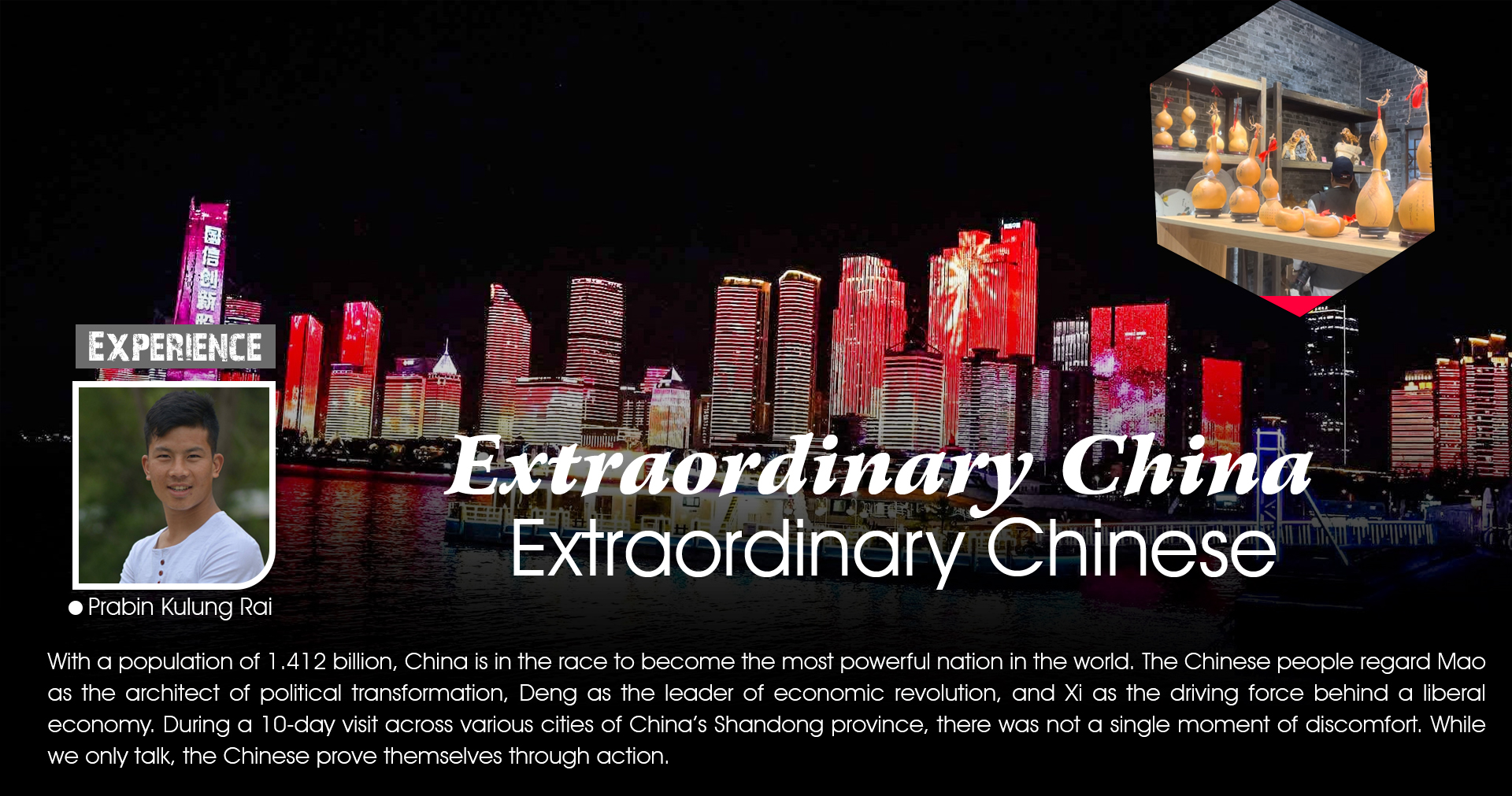
Kathamandu . Over 210 years ago, French Emperor Napoleon Bonaparte famously said, "Let China sleep, for when she wakes, she will shake the world." As he predicted, it hasn’t been long since China awoke. Yet, in a short span of time, it has shaken the world as if by some kind of magic. It has been 47 years since Deng Xiaoping initiated China's economic revolution in 1978. Today, China has become the center of the world.
In 1949, after a century and a half of foreign-directed rule, the People's Republic of China was proclaimed. At the time, Chinese Communist Party Chairman Mao Zedong declared, "Today, the Chinese people have stood up, and now they will run." Despite that proclamation, the people endured the decade-long wounds of the Cultural Revolution. After the revolution ended around 1975, China, as Mao had envisioned, began to run. Under Deng Xiaoping's leadership, China raced forward, and today it stands close to the top of the global hierarchy, reviewing its past and proudly sharing the thrilling story of its success with the world. Everyone dreams of hearing the story of China's success and witnessing its unprecedented progress.
I, too, had that wish. It came true on December 12 (Mangsir 26) when the National Federation of Photo Journalists (NFPJ), Nepal, organized a photo exhibition in Binzhou. During a 10-day stay, I had the opportunity to observe and experience various examples of China’s astonishing economic, technological, social, and cultural development that have amazed the world. The exhibition was organized in cooperation with the Binzhou Photographers Association, Chinese Tourism Photographers, and the Nepal-China Friendship Association.
I tAs part of the Nepal-Shandong Cultural Week and the captivating "Beautiful Nepal" photo exhibition, I had the opportunity to visit China as the Secretary of the NFPJ, Nepal. Our 14-member team of photojournalists flew from Kathmandu to Qingdao on a regular Himalaya Airlines flight. Chinese tourists eagerly crowded the plane’s windows to catch a glimpse of Mount Everest, the roof of the world. With my curious and outgoing nature, I communicated with them using gestures and English.hen began showing them pictures on my phone of the 8,000-meter-plus peaks of Nepal that I had captured—Everest, Kanchenjunga, Makalu, Lhotse, and more. Delighted, they exclaimed, “Wow, Himalaya!”
After seeing the pictures, they asked, “Where can such beautiful views of the Himalayas be seen from?” I replied, “From my home in the eastern hilly district of Bhojpur, where lies the beautiful Mundhum Trail. From there, you can see six peaks above 8,000 meters, including Everest, Kanchenjunga, Makalu, and Lhotse.” Excited by my answer, the Chinese travelers wanted to learn more about the Mundhum Trail.
We connected via WeChat, and I shared more of my mountain photos with them. They happily responded, “she she.” Now, those same Chinese friends keep asking, “When will you take us to your village?”
The photo exhibition featured around 100 images taken by photojournalists from various Nepali media outlets, showcasing tourism, culture, lifestyle, and diversity. Exhibitions were held across several cities in Shandong Province. Four of my photos were included: one of a cricket match played at Silicho (4,153 meters) in Salpa Silichho Rural Municipality, Bhojpur; another of the Sakela dance; one of traditional Nepali handmade paper production; and a picture of Mount Everest.
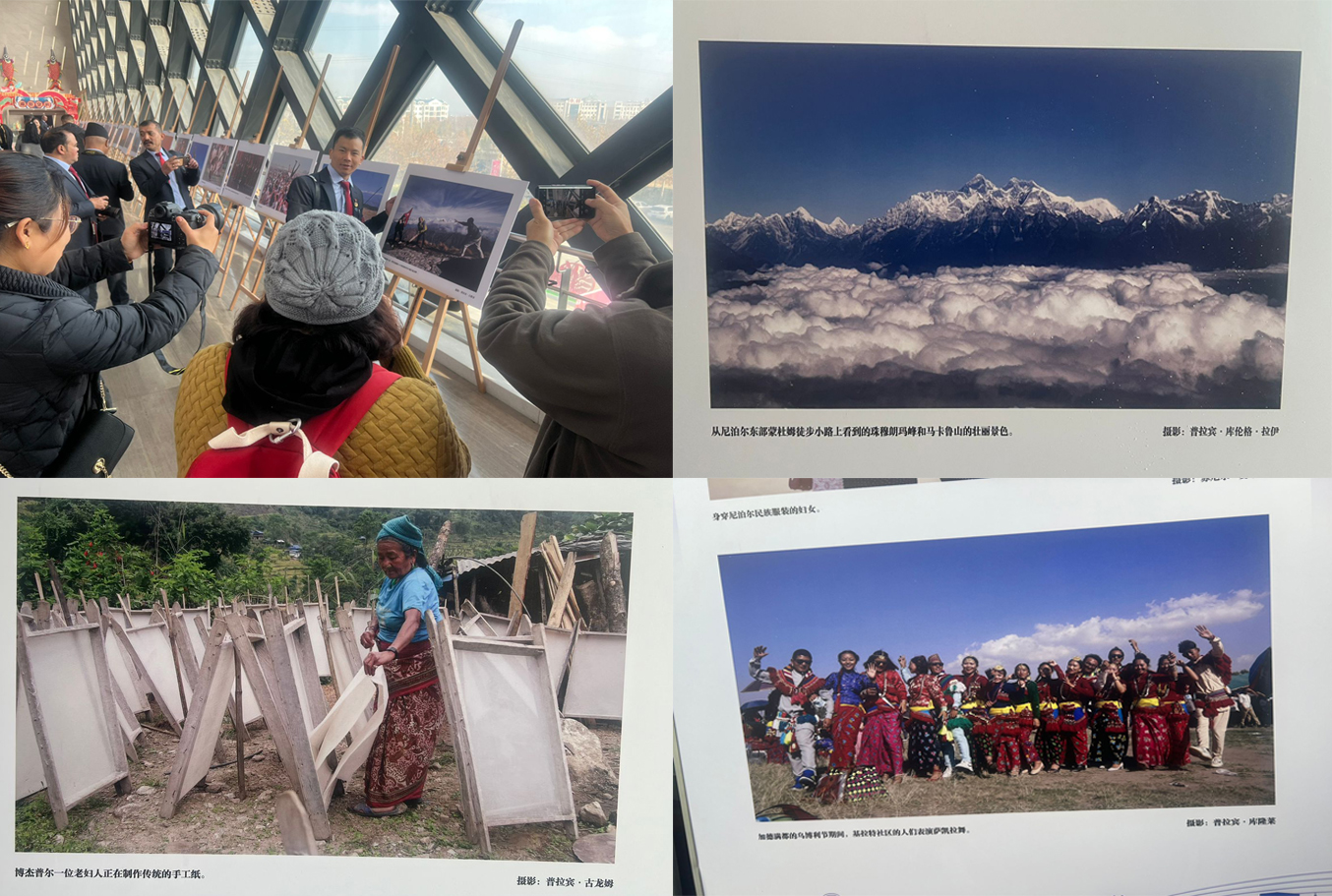 Four of my photographs were included in the exhibition. They featured: a photo of people playing cricket at Silichho (4,153 meters) in Salpasilichho Rural Municipality of Bhojpur; another of the traditional Sakela dance; one depicting the making of Nepali handmade paper; and a majestic image of Mount Everest.
Four of my photographs were included in the exhibition. They featured: a photo of people playing cricket at Silichho (4,153 meters) in Salpasilichho Rural Municipality of Bhojpur; another of the traditional Sakela dance; one depicting the making of Nepali handmade paper; and a majestic image of Mount Everest.Kirati Culture and the Chinese
It was because of Kirati culture that I became even closer to the Chinese. Many of the Chinese cultural traditions, lifestyles, and customs were similar to those of the Kirat Rai community. The chindo, pechuri, and decorative dhajuri bunches I had brought from Nepal fascinated them. They observed these items with great affection and interest.
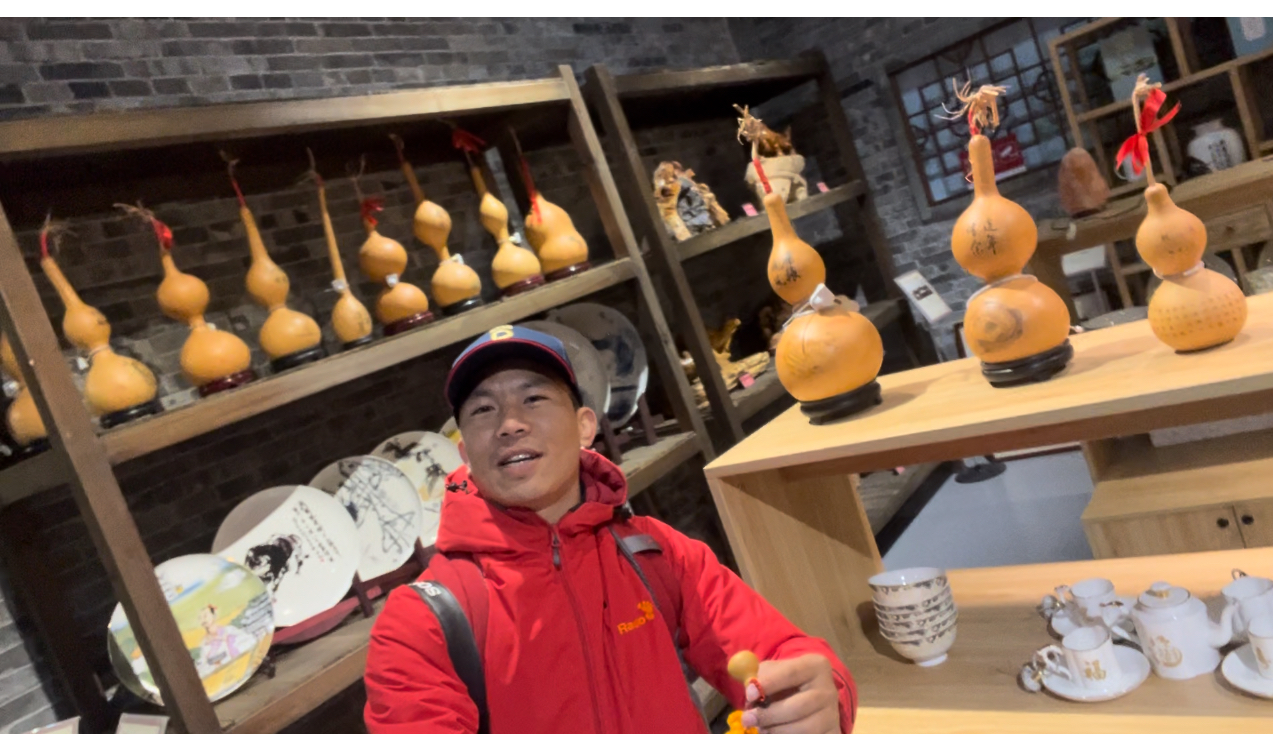
Every museum in Shandong Province, China, has decorated the Chindo as a part of its culture.
In conversation, I learned that chindo (called sendong in Chinese) also holds cultural significance for the Chinese. Just as the Rai and Limbu communities in Nepal consider chindo essential during auspicious events—using it to serve alcohol or traditional brews-the Chinese preserve and exhibit chindo in their museums and important sites as cultural artifacts for tourists to see and understand.
Nepal’s Kirati community uses pork during festivals, weddings, and rituals. Similarly, pork is a common cultural component among the Chinese too.
.jpg)
Unimaginable Development in an Extraordinary
China With a population of 1.412 billion, China is racing to become the most powerful nation in the world. The Chinese regard Mao as the political reformer, Deng as the pioneer of economic revolution, and Xi Jinping as the architect of the modern liberal economy. In our 10-day trip across cities in Shandong Province, we faced no inconvenience. We talk, but the Chinese act.
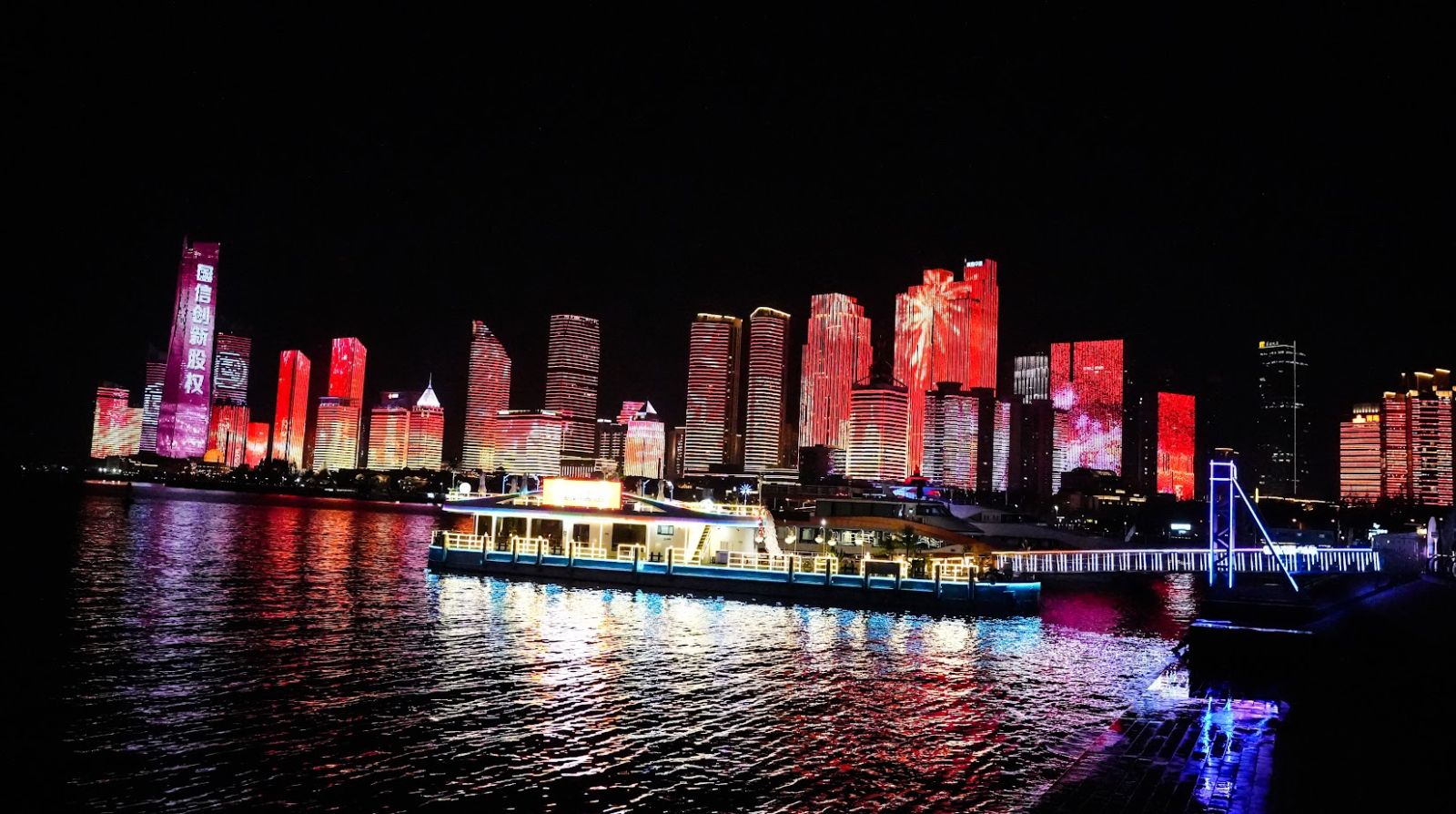
After the communist revolution, Mao Zedong established the communist regime in vast China. From 1949 under Mao to Deng Xiaoping and now to current President Xi Jinping, China’s progress in agriculture, industry, and technology has been miraculous and extraordinary.
Every park features water fountains, exercise equipment for various age groups, rest areas for the elderly, dedicated children's parks, purified drinking water, modern toilets, salons, and pharmacies—all maintained with high standards.
The Chinese Communist Party is now led by Xi Jinping, who has elevated China's global stature more than any leader since Mao. Xi aims to make China the most developed and civilized country by 2050. In 2013, President Xi announced the revival of the ancient Silk Road with a modern twist, which evolved into the Belt and Road Initiative (BRI). Today, BRI is a topic of global discussion. Over 150 countries and organizations are involved, with more than 13,000 projects under implementation—making BRI one of the biggest initiatives of the 21st century.
The Chinese consider 2040 a peak year for development. They say, "Our goal is 2040," marking 100 years of the Communist Party's journey. The world already sees a grand China—what more will it achieve by 2040?
%20copy.jpg)
Nepal and China established diplomatic relations in 1955. Since then, they have shared strong bilateral ties, economic cooperation, and people-to-people exchanges. On May 12, 2017, Nepal and China signed a memorandum of understanding under the Belt and Road Initiative. During Prime Minister KP Sharma Oli’s visit to China, the BRI framework agreement was also signed between Nepal’s Ministry of Foreign Affairs and China’s National Development and Reform Commission.
The framework includes ten projects: Tokha–Chhahare Tunnel, Hilsa–Simikot Road Project, Kimathanka–Khandbari Roads and Bridges, Gyirong–Kerung–Kathmandu Railway, Amargadhi City Hall Project, Rasuwagadhi–Chilime 220kV Transmission Line, Madan Bhandari Science and Technology University, Kathmandu Scientific Center and Science Museum, China–Nepal Industrial Park in Damak, and Jhapa Sports & Athletics Complex. The goal is to complete these projects by 2049. China has called on other countries to join this grand initiative.
How to Connect China and Nepal?
To better connect with China, Nepal needs to expand and develop its northern border points: Kerung in Rasuwa, Kimathanka in Sankhuwasabha, Olangchung Gola in Taplejung, and Tatopani in Sindhupalchok, extending all the way to the Mansarovar route in the west.
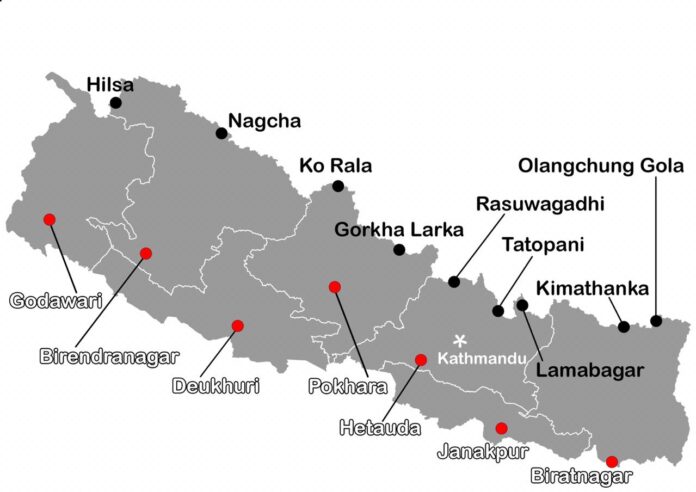
Nepal needs Chinese technical support in railway, hydro, tunnel, bridges, and road infrastructure. If we can modernize Nepal and connect it to a developed China, Nepal can benefit greatly as China becomes a global power.
"In 2019, a total of 1,197,191 foreign tourists visited Nepal. This is the first year that a significant number of tourists have visited Nepal after the COVID-19 pandemic. From 2020 to 2022, tourist arrivals were almost completely halted. According to the latest six-month data from the United Nations World Tourism Organization (UNWTO), Nepal’s tourism has recovered by 96 percent since COVID-19."
"The Nepal Premier League (NPL), the World Buddhist Conference, the International Balloon Festival, the Dragon Boat Race Festival, along with various national and international fairs and exhibitions, have contributed to the increase in tourist arrivals in Nepal. If this trend continues, the government's target of bringing in 1.6 million tourists in the fiscal year 2082/83 (2025/26) will not be difficult to achieve. According to recent data, after India and the United States, neighboring China ranks third in terms of tourist arrivals to Nepal."
What Can Nepal Learn from China?
India and China gained independence around 1950. Both countries have made significant advancements in science and technology. By comparison, Nepal still lags behind in many aspects of development. What we must understand is that development must be viewed holistically. It requires visionary leadership, strong governance, and active citizen engagement-all of which are evident in China’s success.
Nepal must learn from China not just because of proximity but also because of its achievements. During our photo exhibition and visits, we had the chance to observe China’s development, project execution, and management.
Every city, village, and road is well-managed. Success should not be measured by how rich a country is, but by how prosperous and happy its people are. India too is a wealthy country, with billionaires like Mukesh Ambani and Gautam Adani. But China's model uplifts the common citizens. Nepal should develop its own economic, social, and political models by studying both China and India.
.jpg)
China’s technology is beyond our imagination. It may take us decades to reach where China is today. China has performed miracles like stopping rain during the Olympics opening, building bullet trains, creating serpent-like flyovers in Shanghai, and even simulating artificial sun. Their data systems are extremely advanced—covering agriculture, industry, trade, even schools and museums.
What stood out in our 10-day visit was the discipline of Chinese citizens. Every city and tourist or historical site we visited, including industrial zones and museums, had clean and well-managed public toilets. There were no beggars or scammers. There were no stray animals. Public toilets were free and hygienic.
Photography That Built Friendships
The Living Road Line, Binzhou Underwater World, Binzhou City Art Museum, Binzhou High-Tech High School, Confucius Museum, Confucius Temple, Kong Family Mansion, Qufu City, Daming Lake in Jinan, Kusuiting Street, Furong Street, Jinan Liberation Pavilion, Baotu Spring Garden, Quancheng Square, May Fourth Square, Olympic Sailing Center, to the dazzling light shows in Qingdao-we visited them all.
On the final day, we visited Little Fish Hill Park, Navy Museum, Jinkyu Road, Zhangqiao Pier, and captured countless photographs.
On December 13 (Mangsir 28), a photo exhibition was held in Binzhou under the chief guestship of Huang Jichun, former Deputy Minister of Publicity of Shandong Province. Binzhou’s Director of Foreign Affairs, Pai Mei, said the photo exhibition not only strengthened Nepal–China friendship through photography but also supported the Belt and Road Initiative.
A Memorandum of Understanding (MoU) was exchanged between NFPJ Nepal and Binzhou Media Group to promote friendly relations and professional cooperation in cultural and photojournalism exchange. NFPJ President Pradeep Raj Banta and Binzhou Media Group Director Zhao Jingyuan signed the agreement.
The agreement included photo, video, and news exchanges and cooperation for professional development.
They say a picture speaks a thousand words. Journalism without photos is incomplete. Through photography, we can connect with developed nations of the world, and it has played a significant role in cultural exchange between Nepal and China.
.jpg)
Symbolic and tourism-focused photo exhibitions and interactions by photojournalists of both countries were meaningful. For the first time, 14 Nepali photojournalists jointly visited China—an unforgettable journey. The trip was made special by the leadership of Nepal-China Forum President Kalyan Raj Sharma and Chinese photographer Su Soy, also Vice President Sunil sharma of NFPJ. We are especially thankful to our fellow photographer friends who made our stay smooth and shared beautiful photos of every moment. Special mention goes to sister Fai Loi (Cecilia), Nana, Syami, Lucas, Chris, the Binzhou Photographers Association, and the Foreign Affairs Team.
We express gratitude to the Chinese government for bringing together such a large group of photojournalists from both countries and creating this significant opportunity for professional exchange. Beyond government-level ties, these events foster stronger people-to-people relations.


.png)
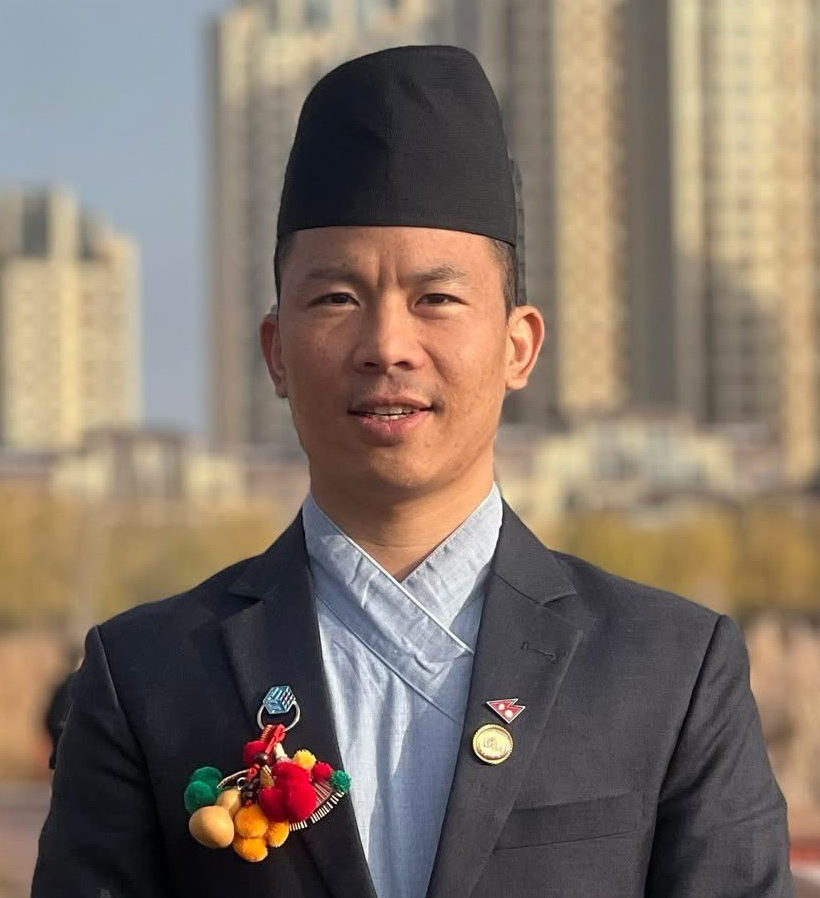


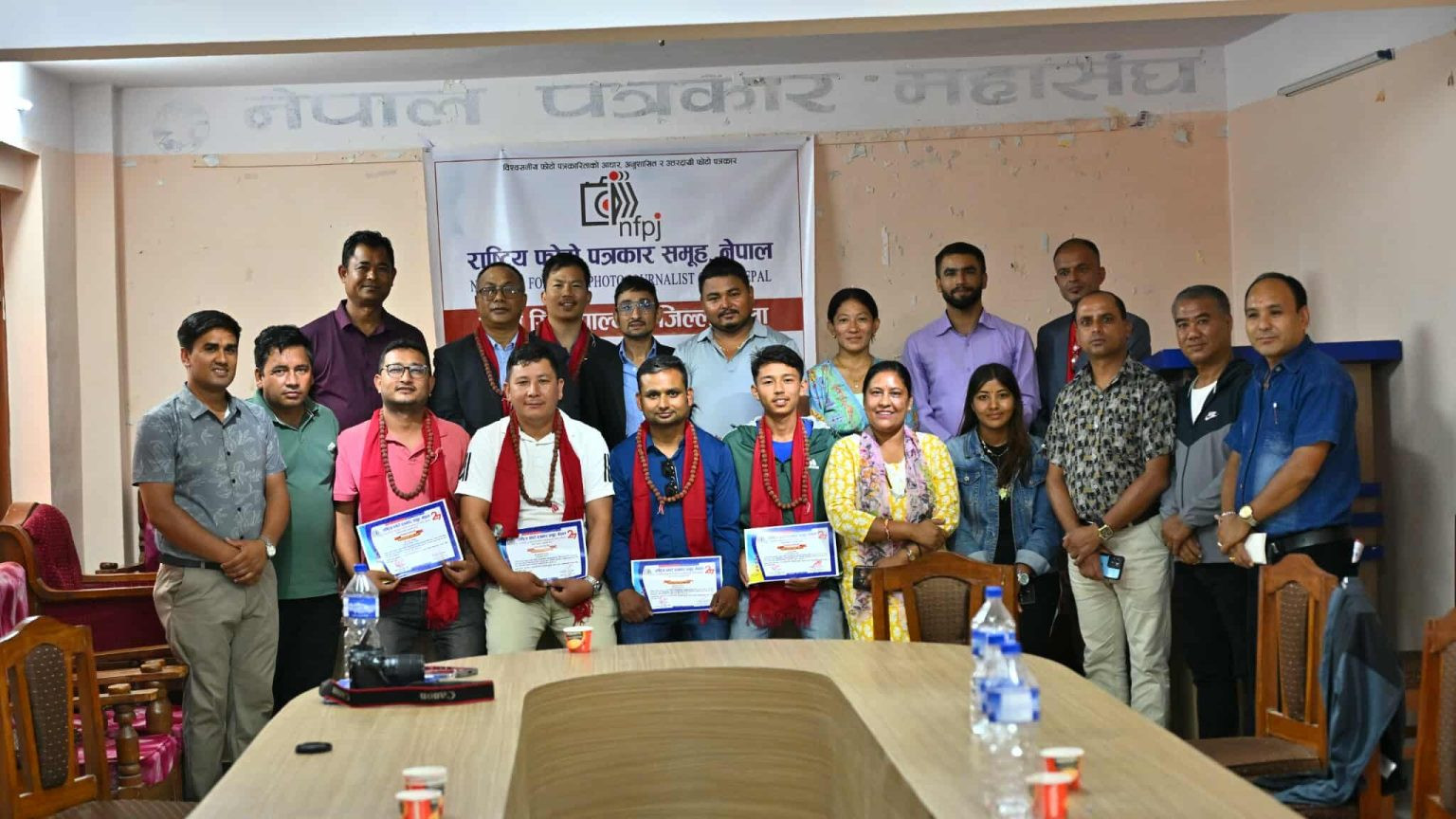

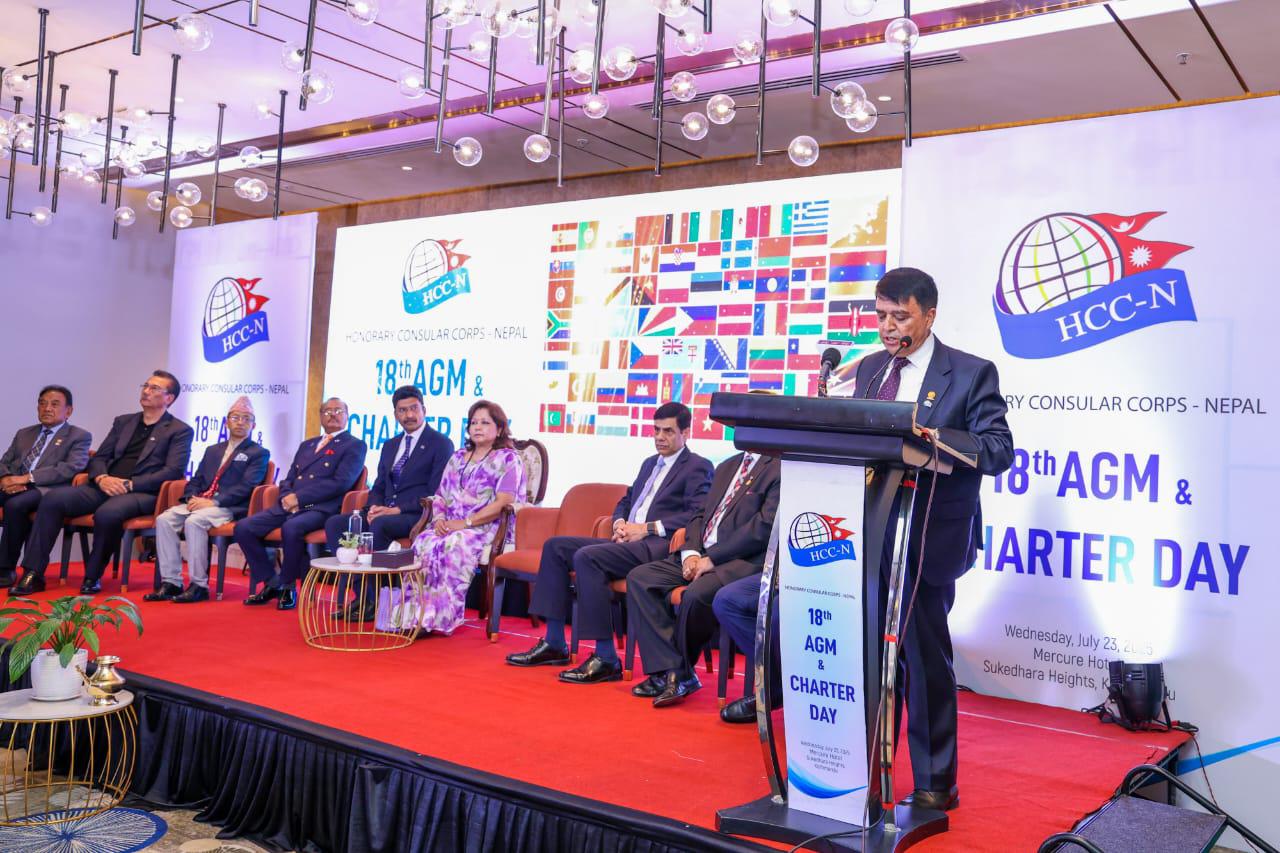
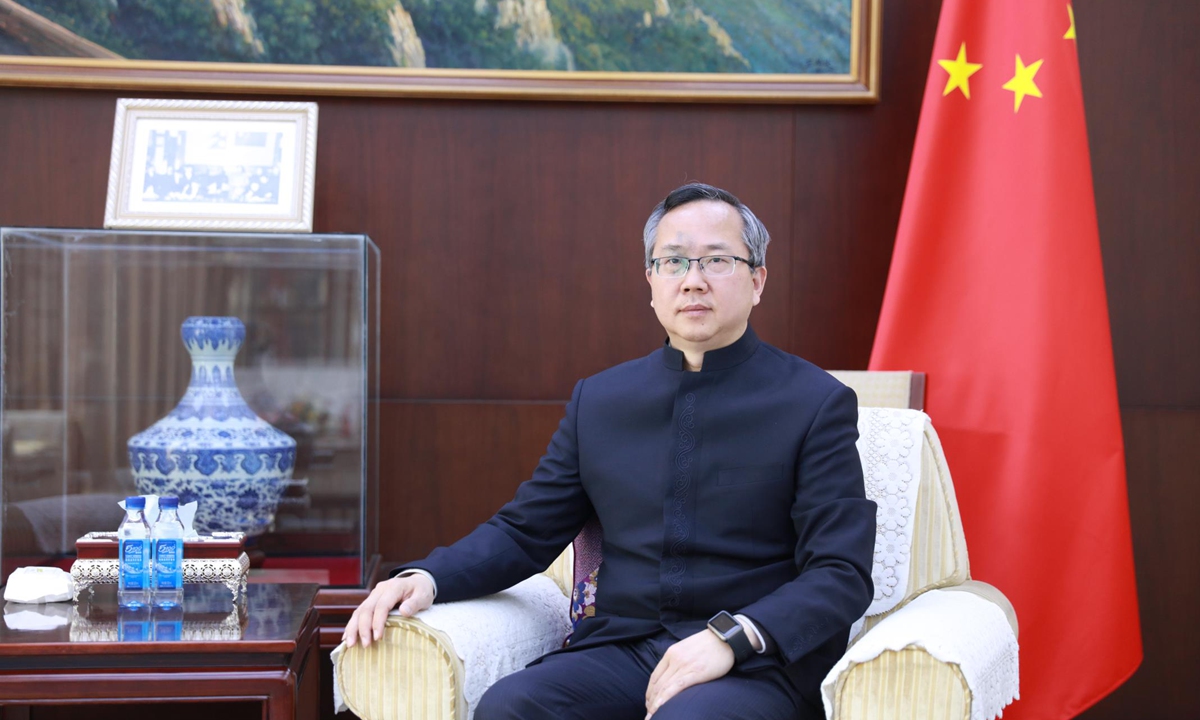

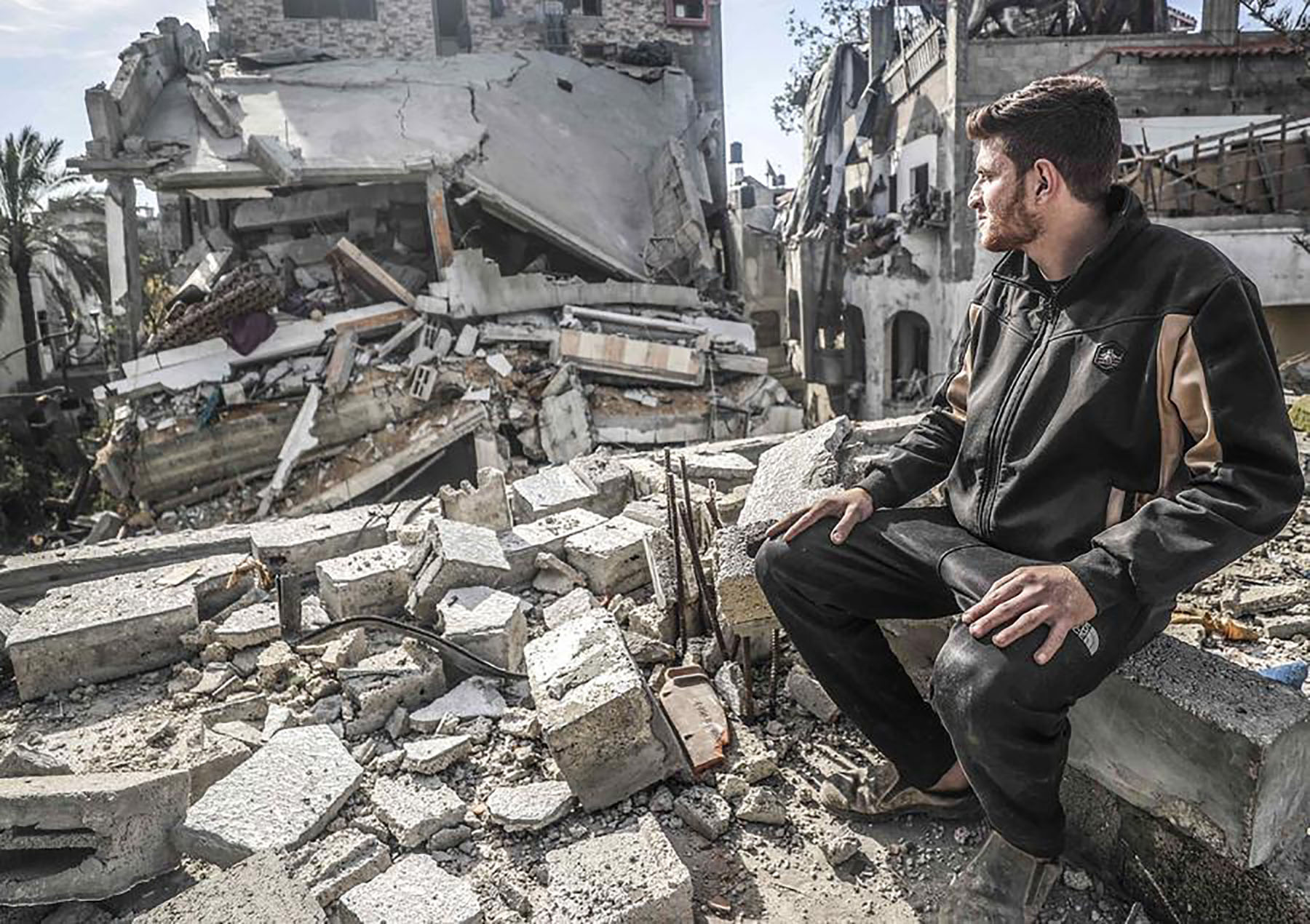

2024-10-01-23-06-38.jpg)